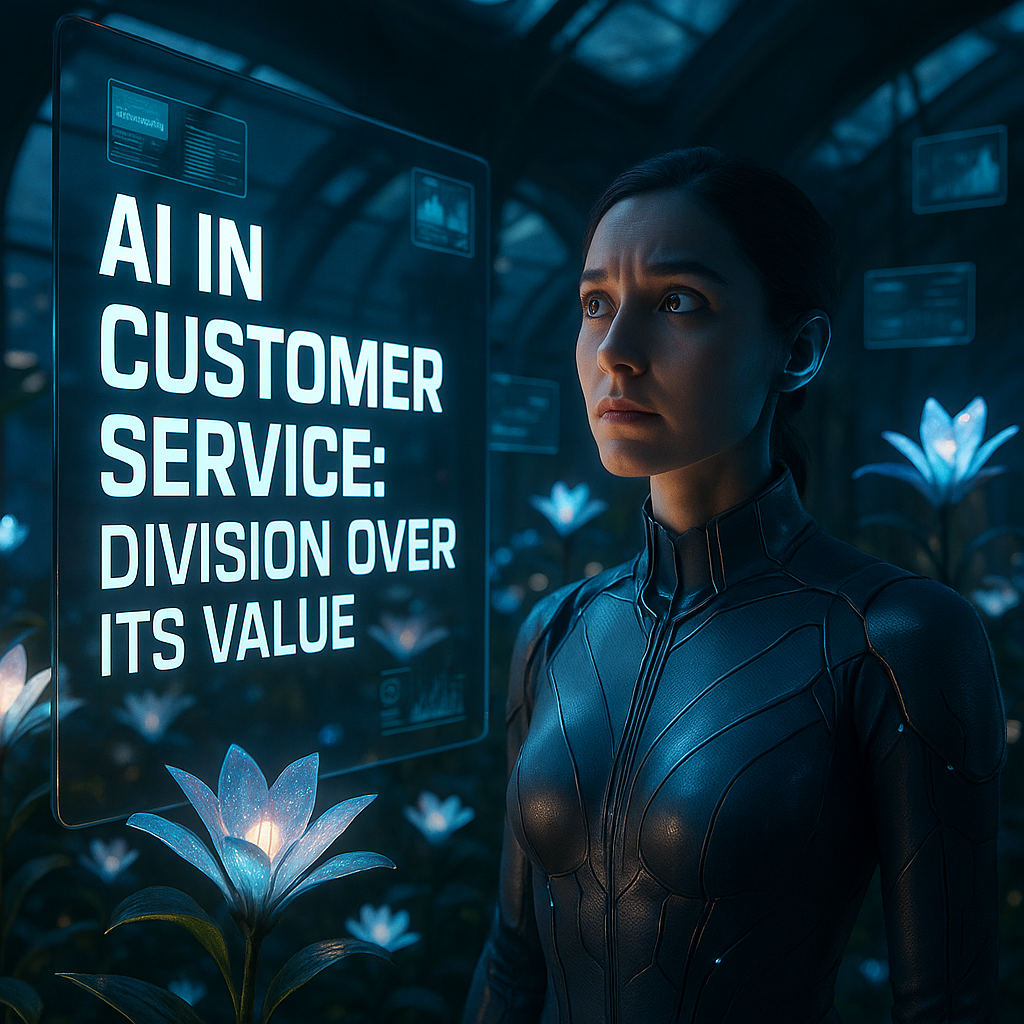
Do Consumers Really Want, or Value, AI for Customer Service?
# Bridging the Gap: AI in Customer Experience
As technology continues to evolve, businesses are increasingly integrating Artificial Intelligence (AI) into their customer experience (CX) strategies. While this shift promises significant advantages for companies, there is a considerable gap between business expectations and consumer perceptions. To bridge this gap, businesses must focus on fostering trust and ensuring the effective implementation of AI solutions.
## The AI-CX Paradox: Businesses vs. Consumers
The disparity between business enthusiasm and consumer acceptance of AI in customer service is notable. According to Metrigy’s study, a substantial 75.9% of businesses report improvements in customer service due to AI integration over the past year. In stark contrast, only 35.6% of consumers share this sentiment. Most consumers are either neutral or even perceive a decline in service quality.
This divergence in perception highlights a key issue: businesses may be reaping internal benefits from AI while failing to visibly enhance the customer experience. As one analyst noted, “Whom you often long to speak to during a customer service call,” acknowledges the enduring preference for human interaction despite the industry’s push for AI-driven solutions.
### Consumer Skepticism: A Mixed Bag
– **Anticipation of AI Influence**: Nearly 70% of consumers expect AI to impact future interactions, but 41.1% of them foresee this impact as negative.
– **AI Agent Variability**: Around 26.4% of consumers report experiencing “significant variability” in AI interactions, and 55.3% acknowledge “some variability.” This inconsistency frustrates users and erodes trust.
AI agents, particularly in text and voice formats, present a stark example of this disconnect. While they offer potential efficiency improvements, consumers often find them more frustrating than helpful. The reasons are clear:
– **Avoidance of AI Agents**: 38% of consumers consciously avoid text AI agents, and 26.5% shun voice AI agents.
– **Inconsistent Performance**: The primary complaint is AI’s inability to comprehend user needs, followed closely by the lack of an easy pathway to human assistance.
## Building Trust in AI
Trust remains a critical issue in AI adoption. While businesses may push for AI autonomy, consumers are wary, with only 21% expressing full trust in generative AI. Instead, 60.8% trust AI selectively, and 18.2% do not trust it at all. Concerns about data privacy, ethical data use, potential misuse, and information accuracy dominate consumer apprehensions.
### Steps to Foster Trust
Building trust will require transparency and the delivery of practical, visible value. Here are a few strategies companies can adopt:
1. **Transparency in AI Usage**: Inform consumers when AI is being used in interactions.
2. **Human Oversight**: Ensure that AI-generated content and decisions are monitored by humans.
3. **Privacy Assurance**: Clearly communicate how personal information is used and safeguarded.
4. **Personalization Preferences**: Respect and cater to consumer preferences for interaction, such as preferred channels and tones.
“Building trust will take transparency and delivering practical value.” This quote underscores the fundamental necessity for businesses to align their AI strategies with consumer expectations.
## The Emotional Element of CX
Incorporating AI into customer experience strategies involves more than just technical implementation—it requires sensitivity to the emotional aspects of customer interactions. Emotions play a pivotal role in shaping experiences, and the sterile efficiency of AI may occasionally overlook this critical dimension.
### CX Leaders: Enthusiasm vs. Caution
For CX leaders, the potential of AI is exhilarating. However, mismatched expectations between what AI can theoretically provide and what it currently delivers could lead to consumer disenchantment. Businesses must continue to refine AI solutions, aligning them closely with customer preferences and experiences. Personalization, transparency, and the assurance of human touchpoints are vital components of successful adoption.
## Conclusion: Engaging with the Future
As we stand at the crossroads of technological transformation, how businesses navigate the AI-CX landscape will significantly impact their success. The question that lingers in the air is:
**How can businesses better align AI innovations with consumer expectations to build enduring trust and satisfaction?**
In this dynamic age, businesses must not only embrace AI’s potential but also actively work to gain consumer trust. By prioritizing genuine improvements in customer experiences, companies can not only bridge the gap between technology and trust but also foster a future where AI and human touch converge seamlessly in customer interactions.

